The Tire Pressure Revolution
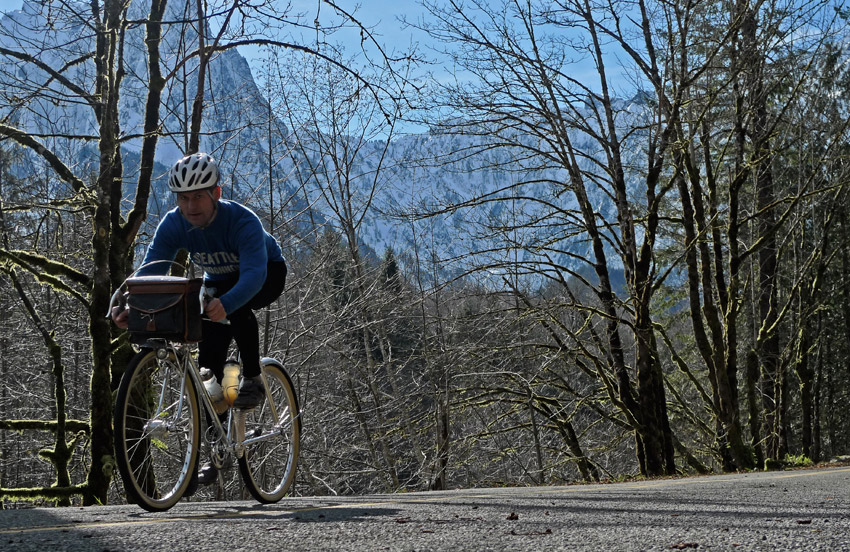
Of all our research on tires, the most revolutionary finding is this: Tire pressure has almost no effect on a tire’s speed. We did not believe it at first, either, so we’ve tested it numerous times. It’s been confirmed numerous times, with different methodologies.
The real revolution is not how you use your pump… What has totally changed our riding are the wide, supple tires, which only work because of this new insight.
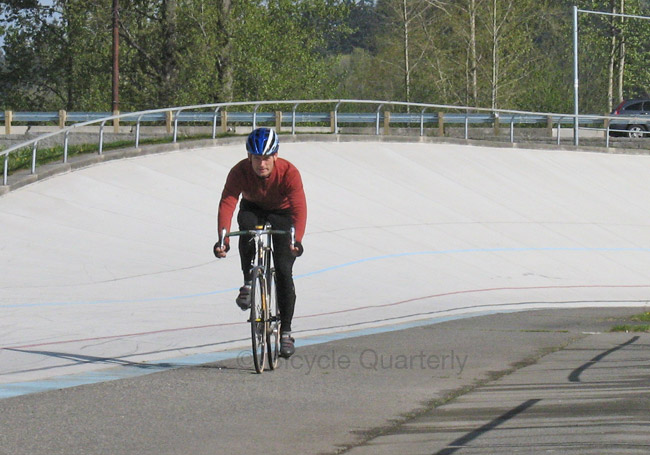
First, let’s look at the data. Here is one experiment: We ran three different 25 mm tires (a supple clincher, a supple tubular and a harsher-riding clincher) at pressures from 4.5 and 9 bar (65 and 130 psi). These tests were done on very smooth asphalt (above), a surface where high pressures should offer the greatest advantages. The graphs below show the power required to ride the bike (above) with the tires at a constant speed of 27.8 km/h, but with different tire pressures.
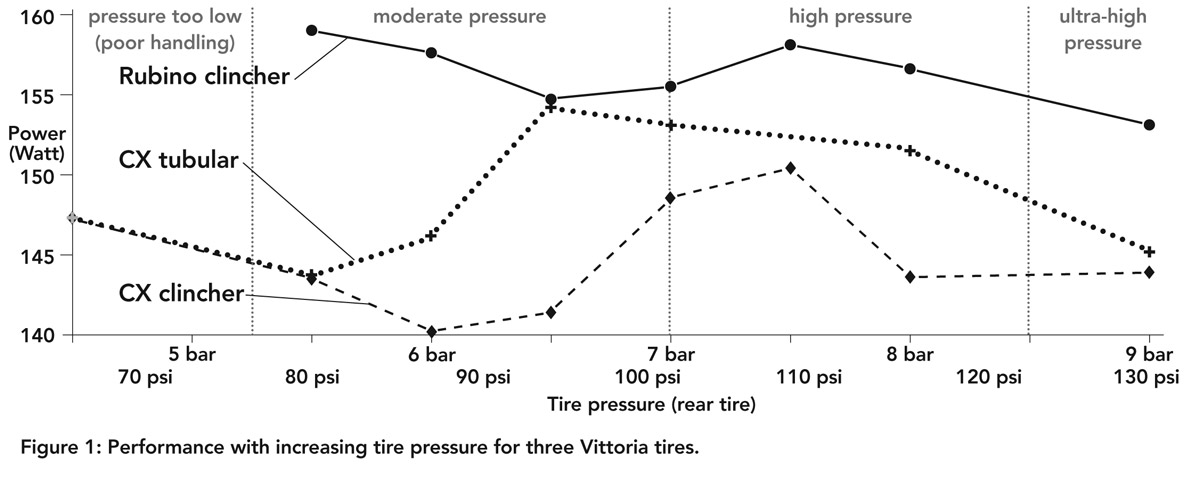
There is no relationship between tire pressure and performance in the tested range. (Lower and higher pressures are unsafe to ride.) The graph above shows some variation in power output (lower is better), but there is no trend. The CX tubular rolls fastest at 5.5 bar, the CX clincher is a little faster at 6 bar, while the Rubino is fastest at 9 bar, but almost as fast at 6.5 bar.
Take-home message: Don’t stress about tire pressure!
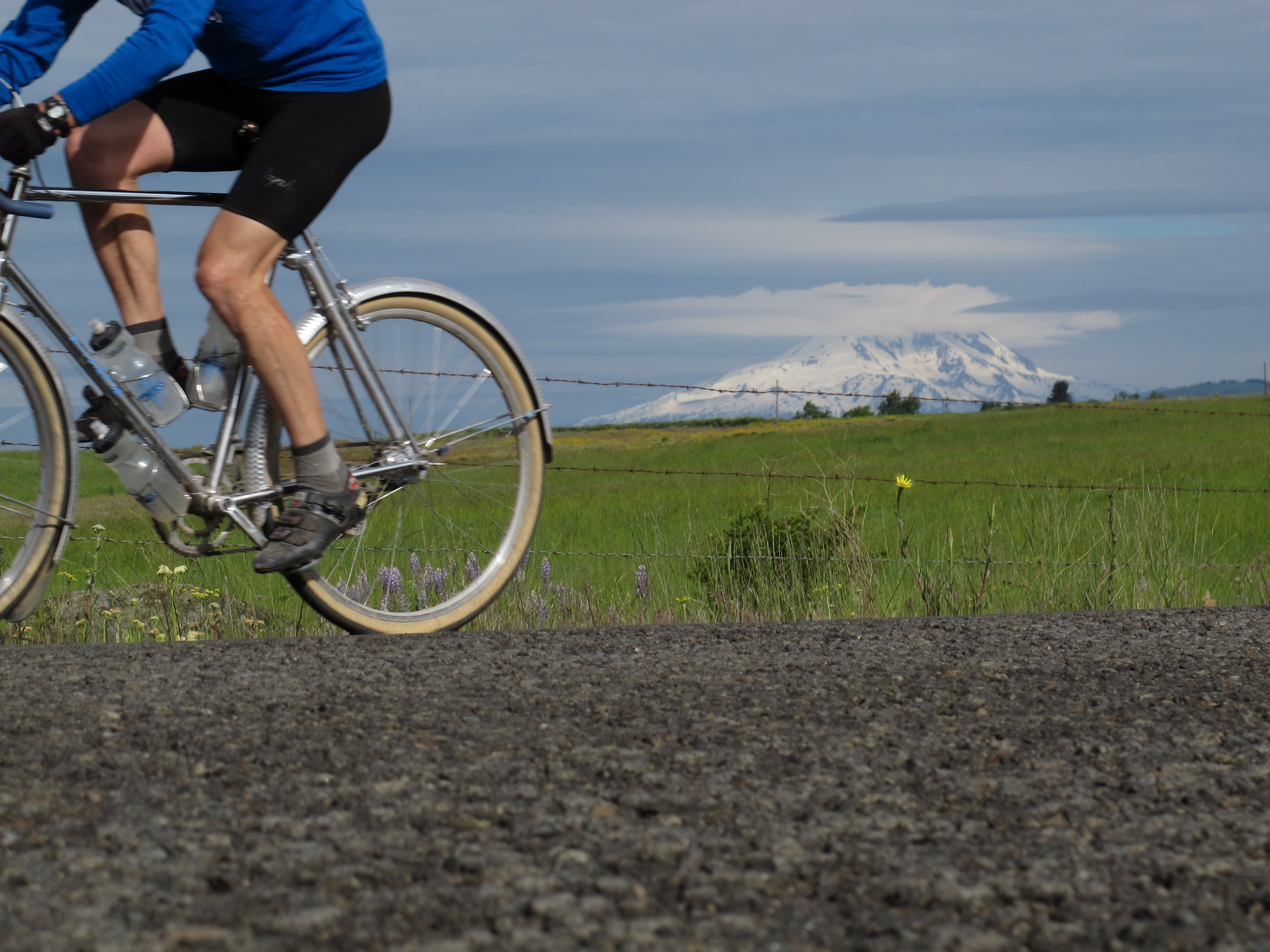
This finding has revolutionized our understanding of tires. In the past, we all thought that higher tire pressures made tires roll faster. And that presented a problem for wide tires: A wider tire puts greater loads on the casing than a narrow one. To compensate, you have two choices:
- Beef up the casing, which makes the tire less supple and slower.
- Lower the pressure, which we thought made the tire slower.
No matter which route you took, then-available science predicted that your wider tire would be slower. It was a catch-22, and for the best performance, you stuck with narrow tires, where you could have a supple casing and high pressure at the same time.
But after realizing that tire pressure doesn’t matter for performance, we were able to explore new possibilities. If lowering the pressure does not make tires slower, you can make supple, wide tires. You run them at lower pressures, and you don’t give up any performance on smooth roads. On rough roads, you gain speed, because the tire (and you) bounce less. And on all roads, you are more comfortable. Instead of a catch-22, you have a win-win-win situation.

It’s this research that has led professional racers to adopt wider tires. They are up to 25 mm now. (Wider ones won’t fit on their bikes!) For the rest of us, there is no reason not to go wider. I now ride 42 mm tires at 3 bar (43 psi), knowing that they roll as fast as a 25 mm tire at 6 bar (85 psi) – or 9 bar (130 psi), for that matter.
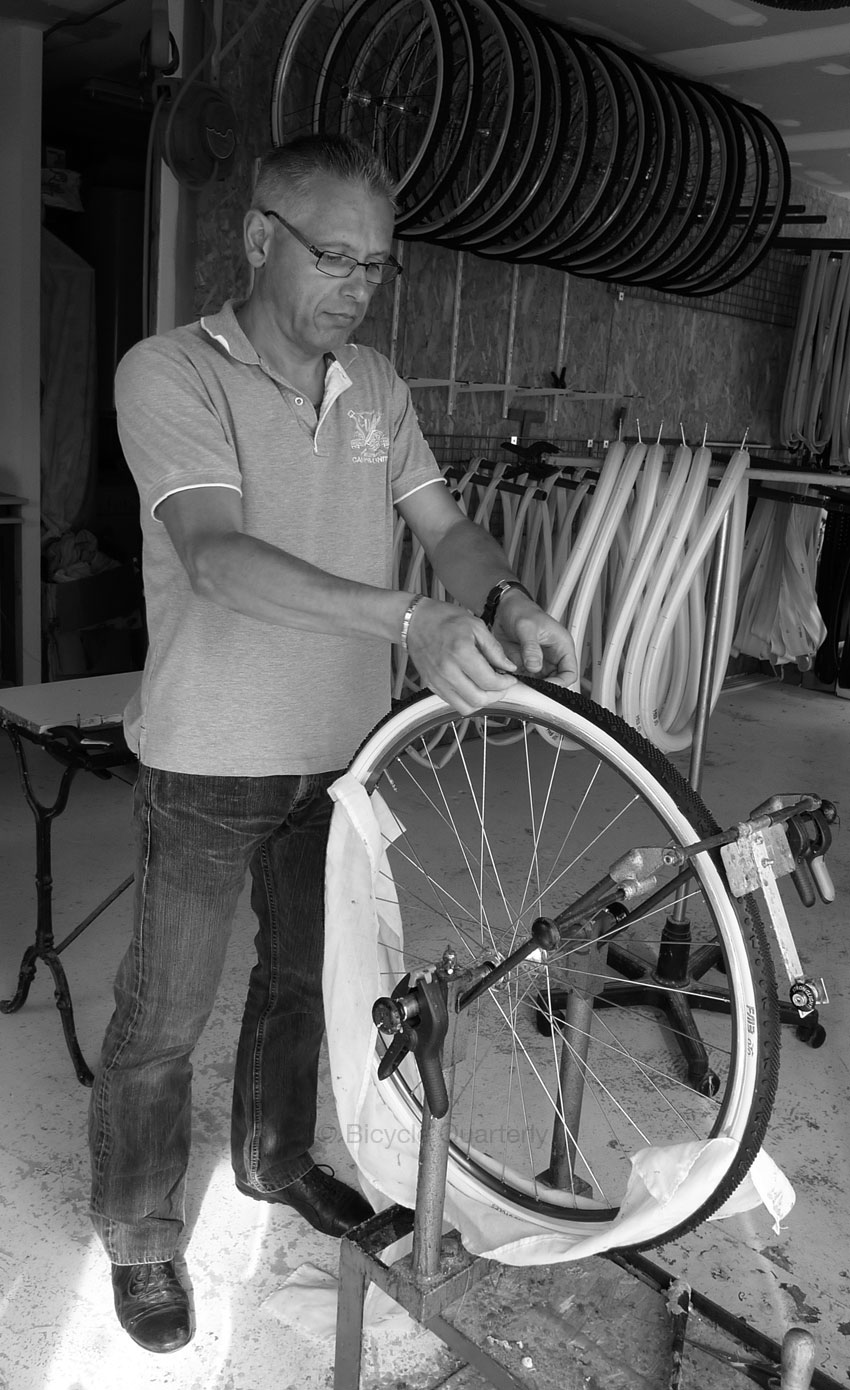
To get the most benefit out of these lower pressures, you need supple tires. A stiff sidewall takes more energy to flex, so the tire will be slower. And since the sidewall is stiffer, it also will be less comfortable. You could call it a “lose-lose” situation.
Professional racers have known this all along: As much as their equipment has changed over time, they’ve always ridden supple tires. They usually ride hand-made tubulars (above), but for the rest of us, supple, wide clincher tires now make it possible to enjoy the ride and speed of supple tires on any road.
- Further reading:
- More data and details on tire pressure.
- The Performance of Tires: Bicycle Quarterly Vol. 11, No. 4.
- Roll-down tests of tire performance: Bicycle Quarterly Vol. 5, No. 1.
- More roll-down tests of tire performance: Bicycle Quarterly Vol. 5, No. 3.


